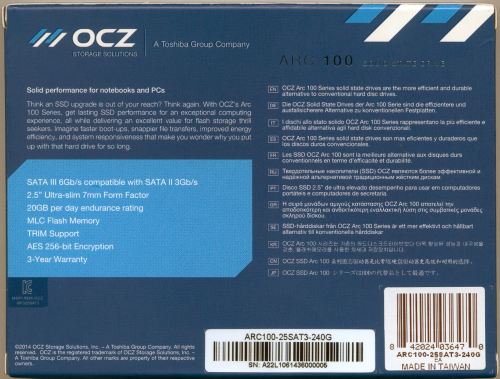The ARC 100 comes in a small, blue box. While there aren't a lot of details on the front, the back of the box advertises many of the drive's key features including its SATA 6Gbps interface, 2.5" ultra-slim form factor, MLC flash memory, TRIM support and AES 256-bit encryption.
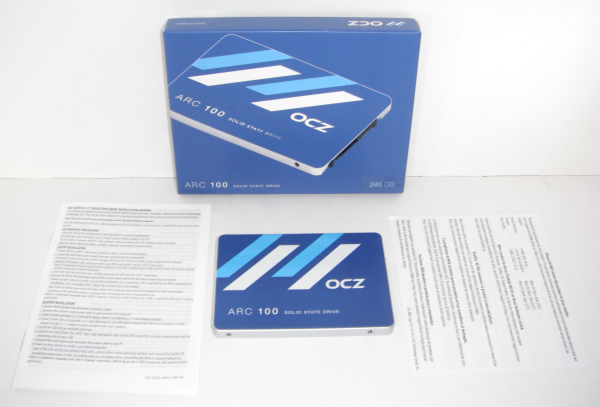
OCZ doesn't include a lot of extras with the ARC 100. Along with the SSD, the box contains a small drive installation manual with instructions for both desktop and notebook computers as well as a sheet of paper with information on how to reach OCZ's tech support.
Physical Features:
The construction of the ARC 100 is very similar to that of OCZ's Vector 150 and Vertex 460 SSDs. The outer casing is made entirely out of aluminum and is covered by a great looking silver finish. The top of the drive also has a large, blue and while sticker showing that it is part of OCZ's ARC series.
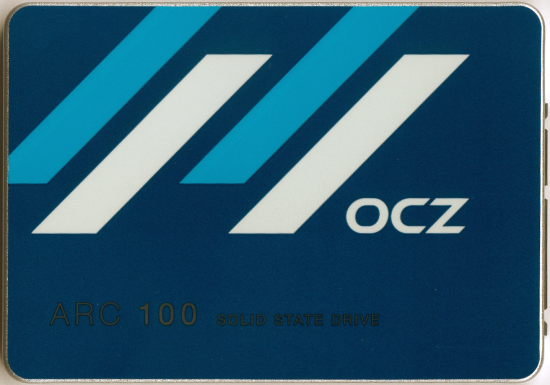
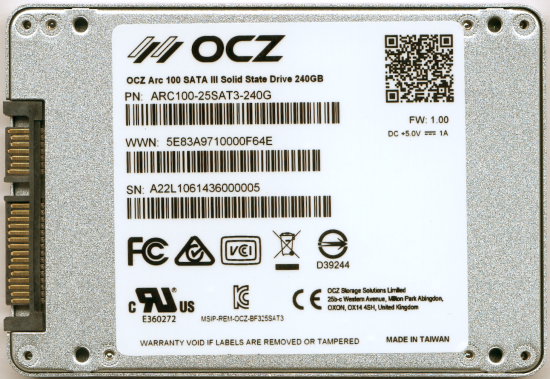
As I mentioned earlier, the ARC 100 uses the Indilinx Barefoot 3 M10 (IDX500M10-BC) controller chip. Like the original Barefoot 3, this derivative is powered by an ARM Cortex processor as well as OCZ's own Aragon co-processor. The Indilinx Barefoot 3 M10 also adds AES-256 encryption and a power-optimized clock generator.

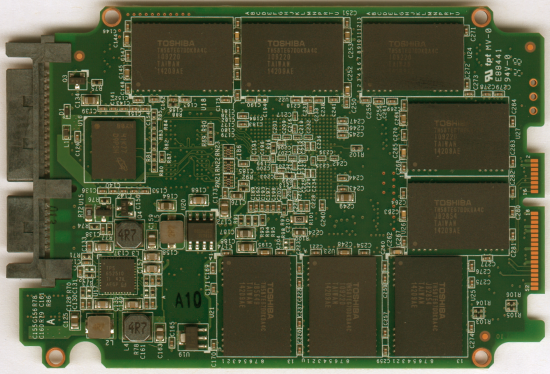
For the 240GB ARC 100, OCZ opted to use Toshiba's A19nm TH58TEG7DDKBA4C MLC NAND flash modules. Looking at the pictures above, you can see that there are eight of these 16GB NAND flash packages on either side of the PCB. The drive also has two 256MB Micron 4HK77 D9PSH DDR3 SDRAM memory chips that are used for caching and garbage collection.



